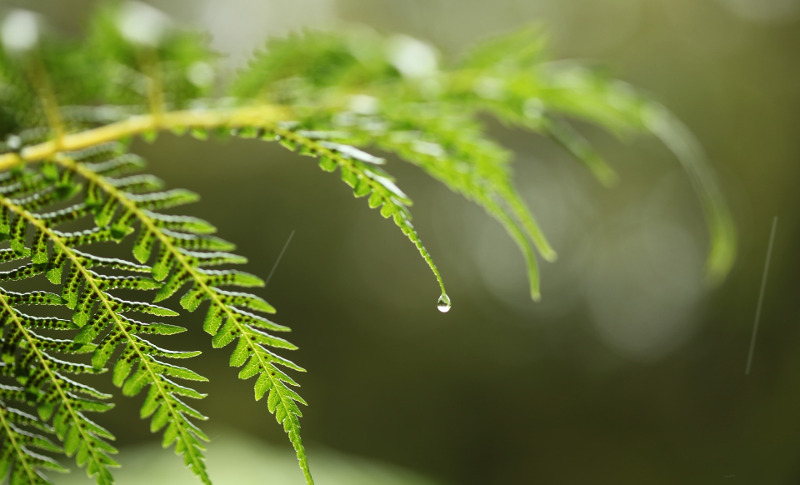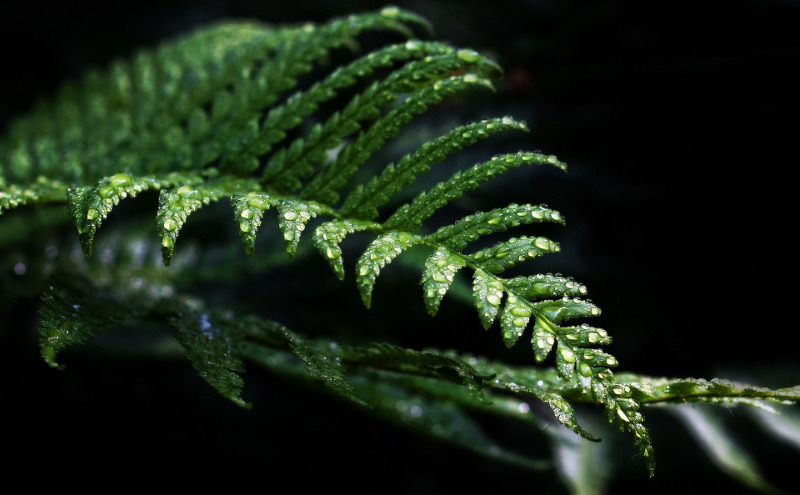With over 10,000 species of ferns, this plant has been a popular gardeners choice for many years. Ferns are very easy to grow and even easier to care for. It is important to note that Ferns have a very shallow root system and roots that are thin and wiry. Absorption of moisture travels through the root system to the plant.

With a shallow root system, Ferns will need some attention when it comes to watering as this plant can quickly dry out. Ferns like loose loamy soil that is rich in organic matter. For this plant to thrive, it needs consistently moist soil. The tricky part of watering is how much and how often to do it. Too much or too little water can harm the plant.
How To Tell If Ferns Needs Watered
Typically, Ferns thrive in consistently moist but not soggy soil. The best way to determine if your Fern needs water is to check the soil. If the surface of the soil feels even slightly dry then it is time to water it. For a potted fern, the weight of the pot is a good sign that it needs a drink.
A lightweight container means that the soil is very dry. You can tell if your fern is under-watered if you notice reduced growth or wilting and/or shriveling of the leaves.

Pay attention to the wilting leaves, as this could also mean that the plant is getting too much water. If the wilted leaves are turning yellow or falling off, then your Fern is being over watered.
In addition, if you notice green or grey mossy growth on the top of the soil, this is another indication that the plant is waterlogged. Over watering can lead to root rot or other fungal diseases.
How Often To Water Ferns
The main thing to remember with Ferns is that they like tropical-like humid conditions. Whether your plant is new or established, the watering needs are the same. If you are receiving regular rainfall, additional watering is not needed.
Without precipitation, weekly watering is needed. A good rule of thumb is to water when the surface of the soil feels dry. It is best to not allow the soil to completely dry out.

Container Ferns that are grown indoors will have different needs than outdoor container Ferns. It is best to create indoor growing conditions that will mimic the outdoor elements that the Fern needs. Water when the soil feels dry, and mist the plant as needed to create humid-like conditions.This will help keep the plant from drying out. If you can lift the container easily, that is a good indication that the soil is too dry and the plant needs a thorough watering.
Outdoor container grown Ferns tend to dry out a lot faster. A resin or plastic container will need to be watered a lot less than a clay pot as clay draws heat from the sun. It is best to have a drainage pan under the container so the roots can absorb extra moisture that it needs.
Depending on the heat in your area, a container Ferns may need to be watered every day. It is best to keep the soil consistently moist but not waterlogged. On the hottest of days, it is a good idea to mist the foliage for added moisture.
Best Time To Water Ferns
As with most plants, it is best to water outdoor Ferns during the cooler morning hours of the day. This will allow the plant to absorb the moisture throughout the day. On the hottest days of summer, it can be beneficial to mist the plant in the morning and again in the evening to create humid-like conditions.
Ferns grown indoors as houseplants should also be watered in the morning hours. During the winter months, Ferns may require less water than during the summer. It is best to water the plant when the soil feels dry to the touch. Ferns like consistently moist soil.
How to Water Ferns
Step 1 - Water plant thoroughly.
Give garden Ferns a slow deep watering. Water potted Ferns until water runs out of the bottom of the container. Never allow the plant to sit in soggy soil.
Step 2 - Water during the morning hours of the day.
Watering in the morning allows the plant to absorb moisture throughout the day.
Step 3 - Provide humid conditions.
Both indoor and outdoor Ferns like moist humid air. Mist an indoor fern two times a week. Mist an outdoor Fern on the hottest of days to help the leaves from drying out.
Step 4 - Water when the soil feels dry.
Never allow the soil to completely dry out. If you can lift your container plant, then you know it is time to give the Fern a big drink of water.
Fern Watering Tips
- Avoid watering the foliage.
- Mist indoor Ferns twice a week.
- Water when the top of the soil feels dry.
- Keep the soil moist but not soggy.
- Pay attention to signs of overwatering or underwatering.
- Do not allow the soil to completely dry out.
 |
Author Chris Link - Published 11-17-2021 |
